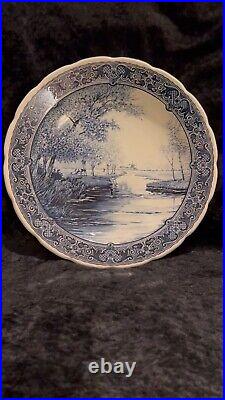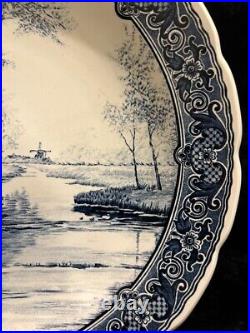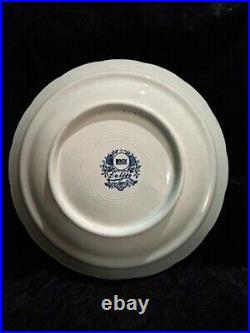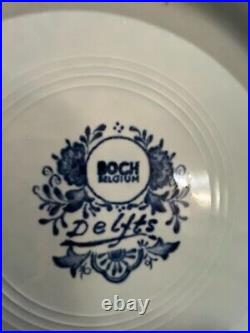Vintage Boch Belgium Delfts Large Wall Display Plate Cobalt Blue White River







A stunning large Boch Delfts cobalt blue and white transferware wall plate with a wide decorative floral border. It bears the Boch Belgium Delfts backstamp, and it has holes to attach a hanging loop (not included). It depicts a traditional Dutch river landscape scene with cows on the river bank and trees and reeds. The flat terrain is typically Dutch, as are the windmill and houses in the background, and the blue and white colour scheme. Very good with no chips, cracks, or restoration. Height 4.5cm/ 1 and 3/4 inches. I use reclaimed packaging, everything is very well wrapped and I always dispatch orders very quickly. Boch ceramic wall plates have a rich history that began in 1748 with the trained foundryman François Boch and his three sons Pierre-Joseph, Dominique and Jean-François, who began manufacturing ceramic tableware and decorative art objects. Based in the village of Audun-le-Tiche in Lorraine France, François Boch decided to manufacture ceramics instead of running a steel works. He was a member of the third generation of owners of the family's pottery business. This was in part brought about due to competition from English imports. Further expansion followed with the acquisition in France of "Paul Utzschneider & Cie". Of Sarreguemines, and at Dresden in Saxony.
Boch Frères were known for their Cloisonné techniques, early 20th-century Art Deco styles, and use of black outlined designs. Their factory's name, "Keramis" was derived from "keramos", the ancient Greek word for pottery.
Boch Frères won numerous medals at exhibitions held between 1844 and 1870. Boch wall plates, also known as Boch Frères plates, gained popularity in the late 19th and early 20th centuries. The plates were characterized by their intricate hand-painted designs, often featuring floral motifs, landscapes, or historical scenes. The skilled artisans at Boch employed various techniques such as underglaze painting, transfer printing, and hand-decoration to create these beautiful pieces. During the Art Nouveau period, Boch Frères embraced the artistic trends of the time and produced wall plates with decorative elements inspired by nature, flowing lines, and organic forms. This era marked a significant shift in design aesthetics, and Boch wall plates became highly sought after by collectors and art enthusiasts. Boch Frères continued to innovate and expand its operations throughout the 20th century.The company introduced new production techniques, including lithographic printing, which allowed for more intricate and detailed designs. They also embraced modernist and abstract styles, adapting to the changing tastes and preferences of the time. Today, Boch ceramic wall plates continue to be cherished for their artistic value and craftsmanship.
They are considered collectible items and are often displayed as decorative pieces in homes, museums, and galleries. The legacy of Boch Frères lives on, as their exquisite wall plates serve as a testament to the skill, creativity, and dedication of the artisans who have contributed to the rich history of Boch ceramics.
